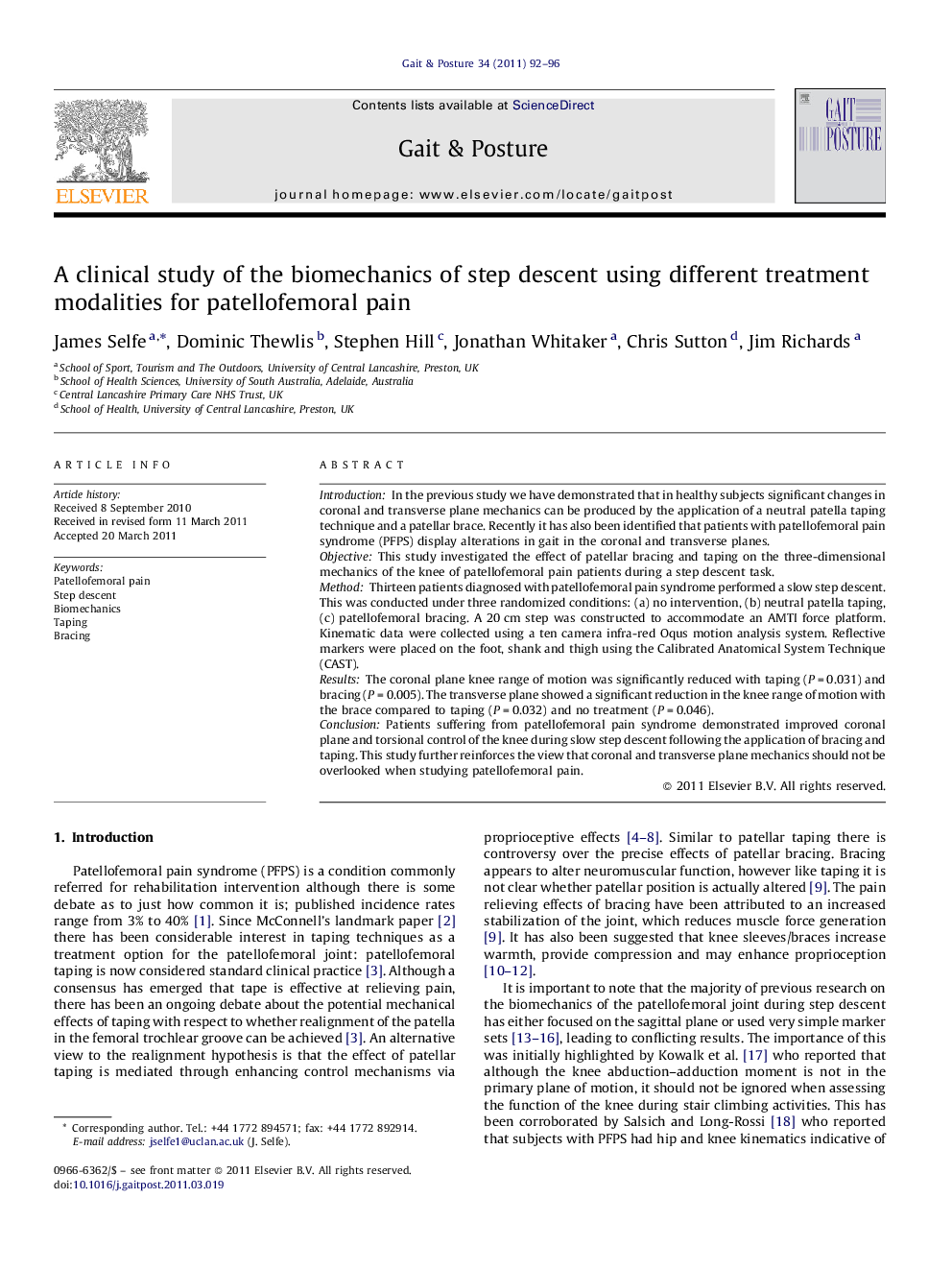| Article ID | Journal | Published Year | Pages | File Type |
|---|---|---|---|---|
| 6208296 | Gait & Posture | 2011 | 5 Pages |
IntroductionIn the previous study we have demonstrated that in healthy subjects significant changes in coronal and transverse plane mechanics can be produced by the application of a neutral patella taping technique and a patellar brace. Recently it has also been identified that patients with patellofemoral pain syndrome (PFPS) display alterations in gait in the coronal and transverse planes.ObjectiveThis study investigated the effect of patellar bracing and taping on the three-dimensional mechanics of the knee of patellofemoral pain patients during a step descent task.MethodThirteen patients diagnosed with patellofemoral pain syndrome performed a slow step descent. This was conducted under three randomized conditions: (a) no intervention, (b) neutral patella taping, (c) patellofemoral bracing. A 20Â cm step was constructed to accommodate an AMTI force platform. Kinematic data were collected using a ten camera infra-red Oqus motion analysis system. Reflective markers were placed on the foot, shank and thigh using the Calibrated Anatomical System Technique (CAST).ResultsThe coronal plane knee range of motion was significantly reduced with taping (PÂ =Â 0.031) and bracing (PÂ =Â 0.005). The transverse plane showed a significant reduction in the knee range of motion with the brace compared to taping (PÂ =Â 0.032) and no treatment (PÂ =Â 0.046).ConclusionPatients suffering from patellofemoral pain syndrome demonstrated improved coronal plane and torsional control of the knee during slow step descent following the application of bracing and taping. This study further reinforces the view that coronal and transverse plane mechanics should not be overlooked when studying patellofemoral pain.
